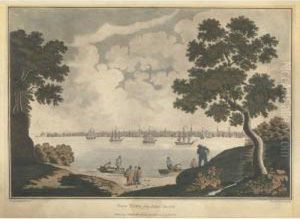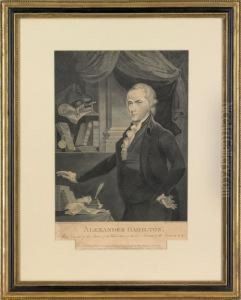William Rollinson Paintings
William Rollinson was an American engraver who was born in 1762 in Cumberland, England. At a young age, he was apprenticed to a watchmaker, but he quickly showed an aptitude for engraving. In 1795, Rollinson immigrated to the United States, settling in New York City, which at the time was becoming a cultural and economic hub in the young nation.
In New York, Rollinson found success with his skill in engraving. He initially worked on watchcases and similar small items, but he soon expanded his repertoire. Recognizing the increasing demand for printed images in America, Rollinson adapted his skills to engrave on copper plates for printmaking. This shift allowed him to engrave a variety of subjects, including maps, book illustrations, and portraits.
Rollinson's work gained prominence when he was commissioned to engrave the official seals for the State of New York and the United States Department of the Treasury. These commissions not only affirmed his skill as an engraver but also established his reputation as a talented and trusted craftsman. Throughout his career, he contributed to the American visual culture by creating images that reflected the society's interests and values.
William Rollinson's contributions to the field of engraving were significant during the early years of the United States. He helped to elevate the quality and status of engraving in America, setting a high standard for others in the field. Rollinson passed away in 1842, leaving behind a legacy of craftsmanship and artistry that helped shape the visual narrative of the young nation.

